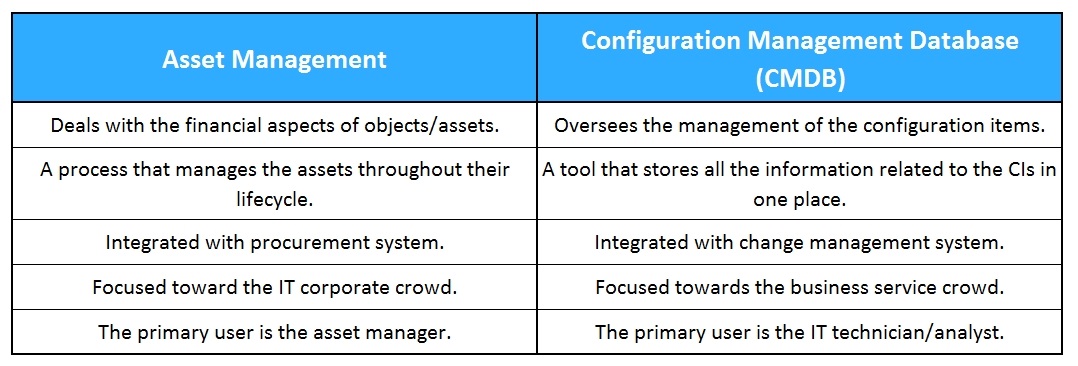When it comes to managing resources, we often come across two terms – CMDB vs. Asset Management. So which one should an enterprise opt for? Even though both these systems work towards keeping track of the company’s resources, they differ in the way they function.
CMDB vs. Asset Management: Difference Explained
For any enterprise, managing assets and infrastructure, in general, is an important aspect of its operations. These assets could be either software or hardware.
As the size of the enterprise grows, it becomes complex to keep a record of the existing resources in the company. Mismanagement could lead to either unnecessary expenditure or inconvenience due to a lack of resources.
In both these cases, the efficiency of the company could be hampered. Thus, it is of utmost importance for any organization to manage its resources.
When it comes to managing resources, we often come across two terms – asset management and configuration management database (CMDB).
Let’s take a look at the difference between an asset and a configuration item.
The word asset deals with any object that has a financial value to the company. Whereas the configuration item (CI) refers to the objects that are needed to provide any service.
A server could be considered as an asset and a configuration item both. As an asset, the server has attributes such as the make, model, RAM, OS, and all. As a CI, it has attributes such as ownership, warranty information, purchase date, etc.
Any CI which needs to be financially monitored can be considered to be an asset.
CMDB deals with storing and managing the information about configuration items. These items need to be managed and controlled to provide any particular service.
The information stored in a CMDB includes ownership, version, type, and the like. Any information about the maintenance or previously encountered with the CI is stored in the CMDB.
CMDB also stores information about the relationships that might exist between the various CIs.
Also Read: What are the 3 Main Goals of Data Lifecycle Management?
Asset management is a broader term than CMDB. IT asset management deals with managing the asset through its entire lifecycle.
IT Asset management deals with all the objects that have a financial value to the company. It includes managing only those assets which have a business or financial impact on the enterprise. For example contracts, invoices, etc.
As is clear from the definition, asset management deals with the financial aspects of any objects/assets. Whereas, CMDB oversees the management of the configuration items.
Asset management keeps track of an asset right from the time it is acquired to the time it is disposed of. It manages the asset throughout its lifecycle.
CMDB, on the other hand, isn’t particularly a process. It is a system that stores all the information related to the object/asset/CI in one place.
Since CMDB needs to keep track of the issues and usage related to the asset, it is often integrated with the change management system. On the other hand, asset management is integrated with the procurement system/ERP.
While asset management is a process, CMDB is a tool. Both systems keep track of configuration history.
The biggest value anyone derives out of CMDB is for IT needs. Hence it is imperative for it to be maintained regularly. Lest the stale data will not provide accurate results, and that can hurt the organization.
ITAM, on the other hand, is useful to the non-IT crowd. They use this data to generate reports for the organization.
These reports can include information about the assets. They also state how they have helped the company generate revenue or cost the company in terms of pure dollars.
Corporates are the main stakeholders for ITAM since they derive the highest value out of it. CMDB is more valuable for the business service crowd. Their major focus lies on the operations, availability, and service instead of corporate focus on lifecycle, cost, and risk avoidance.
CMDB comes majorly handy in operations as compared to the business aspect that ITAM holds.
So which one should an enterprise opt for? There is a need for your organization to explore the requirements and accordingly make an informed decision. You need both CMDB and ITAM, all that it boils down is the amount of data you need to store and work with.
Also Read:
Businesses must know about the Best Practices in IT Asset Management
ECM vs. CMS: Similarities and Differences Explained
Learn about the Top IT Asset Management Tools for Businesses



